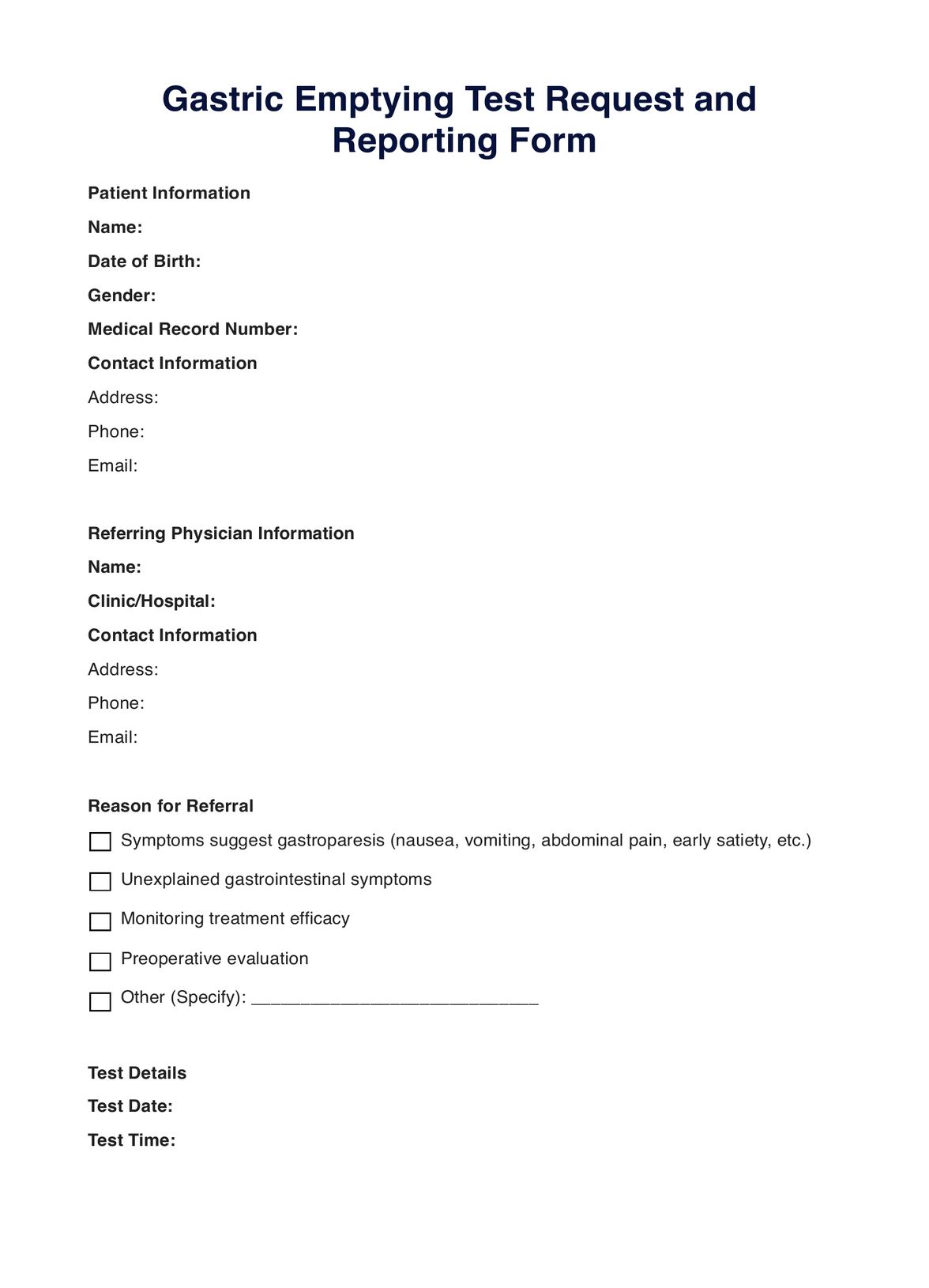Gastroenterologists or healthcare providers typically request Gastric Emptying Tests for patients exhibiting symptoms like chronic nausea, vomiting, abdominal pain, or early satiety, which could indicate gastric motility issues.

Gastric Emptying
Explore the Gastric Emptying Test, a diagnostic tool for gastrointestinal disorders. Learn about its uses, procedures, and results.
Use Template
Gastric Emptying Template
Commonly asked questions
During a Gastric Emptying Test, a patient consumes a meal or drink with a radioactive tracer. Images are taken at specific intervals using a gamma camera to monitor the movement of the meal from the stomach into the small intestine, providing insights into gastric emptying.
A Gastric Emptying Test typically takes about 4 hours, with images taken at intervals throughout this period to track the movement of the meal through the digestive system.
EHR and practice management software
Get started for free
*No credit card required
Free
$0/usd
Unlimited clients
Telehealth
1GB of storage
Client portal text
Automated billing and online payments











